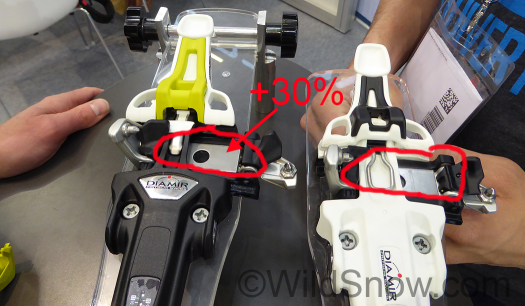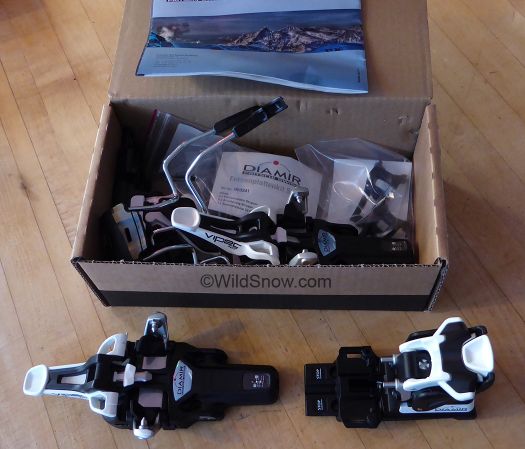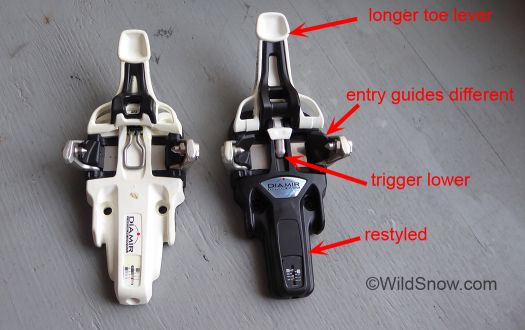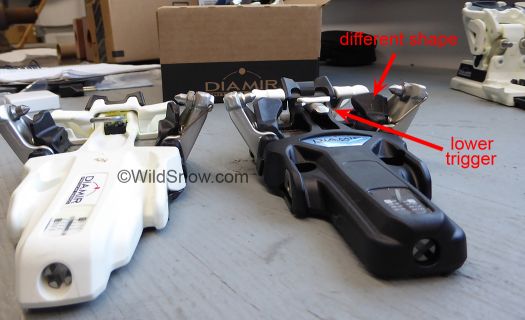Update: It’s late January and I’m at the ISPO trade show in Munich. My meet with Fritschi went well, with clarification about added Vipec Black improvements and features. I wasn’t clear on how they added “more elasticity and better retention,” got that straightened out. They did two things. First, as shown in photo above they simply reduced the width of the plastic rib that runs over the slider plate, thus allowing the plate to move farther to the side before stopping.
The amount of elastic travel in the Vipec toe is now quite impressive, perhaps even more than some alpine bindings. Adding to the fun, they beefed up the spring that controls sideways movement of the slider, so you get even greater retention. The beefed spring and associated metal reinforcements are where the mass increase of about 20 grams originates, a worthy trade in my opinion. Overall, I’m more impressed than ever by what Fritschi offers with the Vipec. So long as the difficulty of step-in is resolved (it probably is) and the toe locks adequately in tour mode (it does), this could possibly be the full “toe and heel pin binding” that comes closest to the performance of an alpine binding, albeit with upward travel at the heel still limited by the classic tech binding pins and boot fitting.
Note: I used the 2014/2015 model “White” Vipec 12 as my comparison unit below. Apparently all the 2015-2016 Vipecs have some of the improvements, especially plastic ice protection under the heel. Tracking all this has been confusing. I try to be a gear blogger, but writing and photographing skiing is a lot more fun than doing a slack jaw zombie stare at the underside of a Vipec toe unit. Main takeaway: If you’re shopping for Fritschi Vipec be sure to get the LATEST BLACK version bindings, otherwise you miss out on what have been numerous improvements.
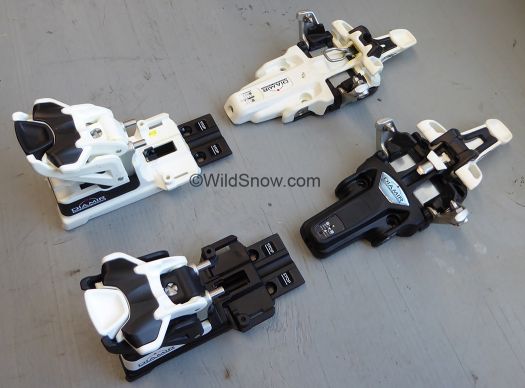
Fritschi White 12 (2014-2015) at top of photo, Black model for this season has numerous small changes. Most significant, easier entry according to our bench tests.
The debacle of the Fritschi Vipec 12 Black is about to cease. What debacle? Just that they’ve been selling and reviewing the new guy in Europe. All the while attempting to keep it off the North American market during the Q4, ostensibly so retailers had a chance to sell their older models, or perhaps because of supply and distribution challenges. Or perhaps all of the above.
Enough conjecture. Enjoy the following comparos. Bear in mind that the big “philosophical” difference between Black Vipec and all other models is that the Black has TUV certification to DIN/ISO Standard 13992 for ski touring bindings. Also bear in mind that might be a small difference, as Standard 13992 is not exactly Mars mission science. (To be fair, a binding such as Vipec with side release at toe might, if meeting 13992, indeed be quite a bit safer than trad “tech” bindings, but that’s just guesswork until someone does an epidemiological study of ski injuries on tech bindings. Like an engineering mentor once told me: “if you can’t measure it don’t talk about it.”) Please see our previous PR post about the Black.
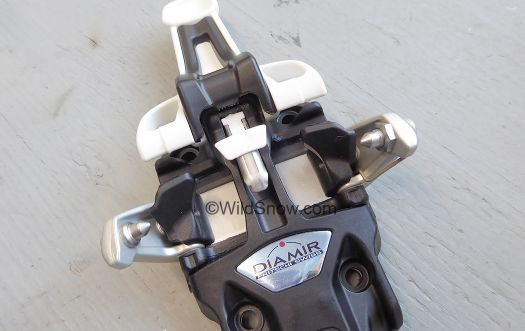
Fritschi Black 12, toe details. PR says the Black has better lateral elasticity as well as slightly more retention in walk mode. Our field reviews will attempt to evaluate those claims, but they indeed sound good. That said, bear in mind that the gorilla in the room here is the fairly standard tech binding vertical release at the heel, with minimal vertical elasticity no better than a Barthel Low-Tech of three decades ago.
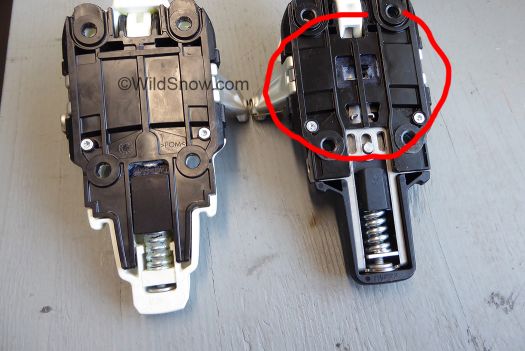
Fritschi Vipec Black toe underside. Notice how the White version (left) actually has more areas filled in with plastic. I find that to be odd. But, this is a 2014/2015 White version, perhaps the 2015/2016 has these areas filled in, as with the White model heel? It’s enough to make your brain cook, trying to keep track of bindings with the same model name but significant ‘in line’ changes.
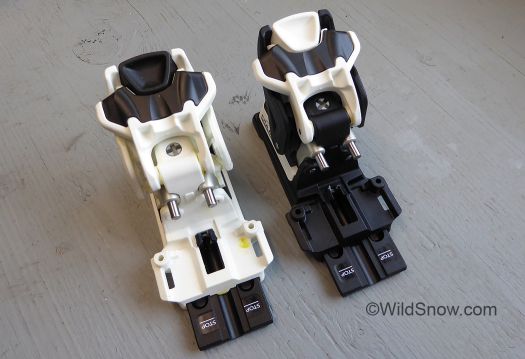
Not much happening in the heels, but they did fill in the base area with some plastic that might prevent icing.
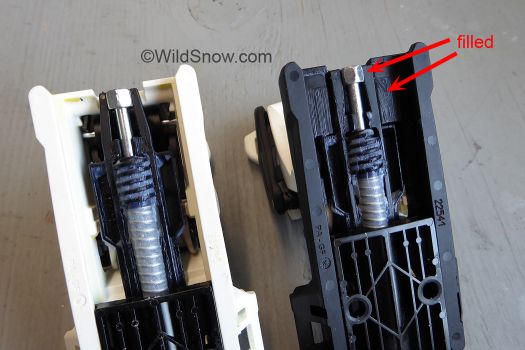
Heel unit underside, Black version (right) has filled areas in what might possibly be an attempt to prevent ice problems. 2015-2016 White model is said to have this as well.
Weights, baby:
Vipec Black 12 & 2014/2015 White 12 heels are same weight, 236 grams with no screws. Heel has some difference, Black is 266 grams as compared to 248 grams for White (sans screws and brake).
Full bindings w/ 100 mm brake and screws: Black is 612 grams, White 594 grams = 18 grams of weight creep.
WildSnow.com publisher emeritus and founder Lou (Louis Dawson) has a 50+ years career in climbing, backcountry skiing and ski mountaineering. He was the first person in history to ski down all 54 Colorado 14,000-foot peaks, has authored numerous books about about backcountry skiing, and has skied from the summit of Denali in Alaska, North America’s highest mountain.

